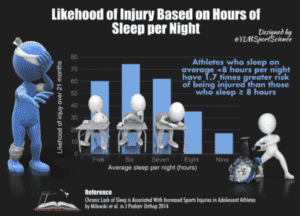With the beautiful spring weather just around the corner, it is a popular time to start running or ramping up that fitness regime. Common goals to start running/exercising during the warmer seasons are for fitness, weight loss and health. Or maybe you are training for a certain event or time/distance that you would like to achieve?
These are the five most common mistakes that result injury or failure of achieving goals:
1. Not setting realistic goals and/or not giving yourself adequate time to achieve them.
Not giving yourself a realistic time frame to achieve your goal causes stress and anxiety with the fear of being “behind” or not being able to achieve your set goal. The result of feeling this way often causes “craming” in their training. Cramming may occur in different forms, involving significant increase in training volume, intensity, duration or even a combination of all. Such as addition of extra training days, larger distances, faster pace and removal of rest days.
With this sudden increase in load, individuals’ physiological stress places the body at risk of developing an injury. Much research has displayed when training load is fairly consistent ranging from 5%-10% increase each week, athletes had a <10% risk of injury. However those that training load increased by 15% or more each week, risk of injury was 21-49%. Therefore in simple terms, to minimise risk of injury, runners should increased their weekly training load by <10%.
2. Ignoring strength and conditioning training
There are usually two reasons why people avoid strength and conditioning training. Firstly, many people mistakenly believe that strength training will make them “bulk up” with muscle mass and therefore impact their running ability or physique. However there is no evidence for this. Research has shown a combination of strength and endurance training has improved efficiency, speed and strength without bulking up or putting on additional muscle.
Secondly, individuals are unaware of the benefit associated with strength training. Research has shown those who include strength training into their program have improved running endurance/energy efficiency, reduced risk of injury, improved time to exhaustion at maximal aerobic speed and improvements in timed performance.
3. Running or training at higher intensity, too often.
It can be difficulty for individuals to understand the concept that if they want to run faster/get fitter they likely need to slow down in some of their training sessions. Training too hard, too frequently is the single biggest mistake
particularly in the sport of running. There has been recent research that has suggested that runners improve most rapidly when they do slower runs in training more often than faster runs. The worlds leading runner report that they spend on average 80% of their training below “ventilator threshold” – basically a pace that you can comfortably hold a conversation.
In other words, for every one hard run, the elite distance runner will run four easy runs. The recreational runner tends to run one easy run for every hard run. The other 20% of training time is spent at high intensity, that is above the respiratory compensation threshold.
4. Ignoring bone and soft tissue health
Bones, muscles, tendons and ligaments are all living tissues that require good “health” in order for them to get stronger.
There is a common belief among runners that running enhances bone health however it more likely “maintains” it. That is, if you were to run regularly you have a better chance of ‘slowing the normal age related decline’ of bone mineral density which to some degree is true but there are many other factors such as weight training, nutrition (calcium), adequate levels of vitamin D and avoiding sudden and unexpected loads to the bones.
5. Spending too much time stretching and foam rolling
Many individuals spend far too much time stretching and foam rolling with the hope that it will allow them to train injury free and get fitter/faster easier. Stretching is certainly not bad and it can have its place however in many instances people spend too much time with these stretching routines with very little, if none at all improvement. The main concern is that focusing time on stretching when that time could be better spent on strength and conditioning which has proven to be very beneficial in reducing injury and improving performance. A more superior approach would be replacing the “stretching” with a strength and conditioning program with a component of mobility.
As you start to get back into your running or exercise regime this spring season, book in an appointment with Enhance Physiotherapy to discuss a safe running program.





